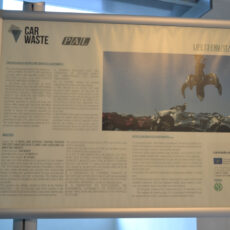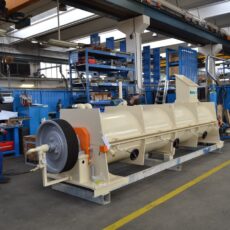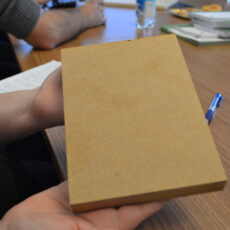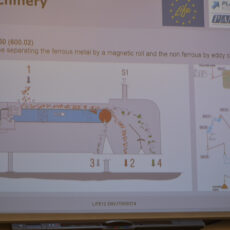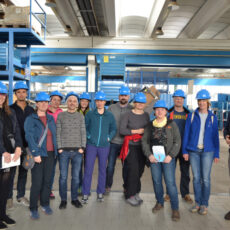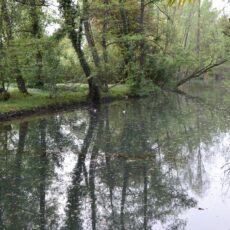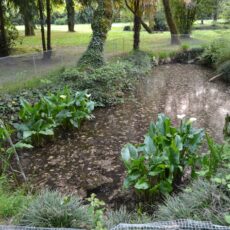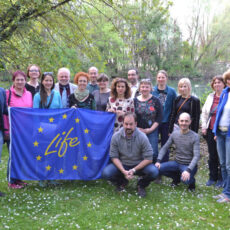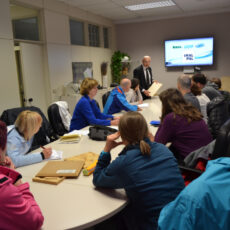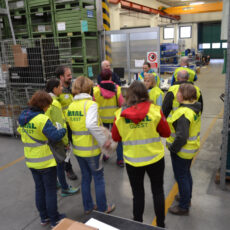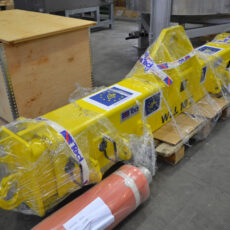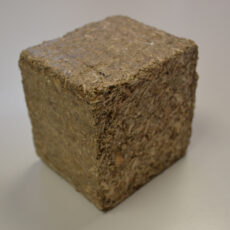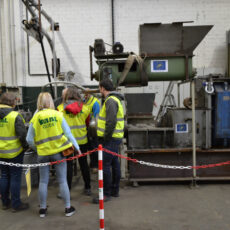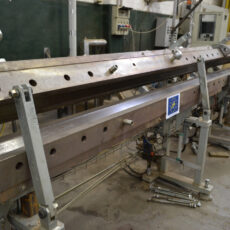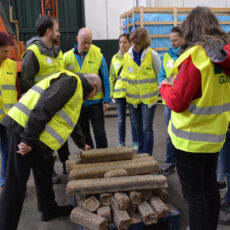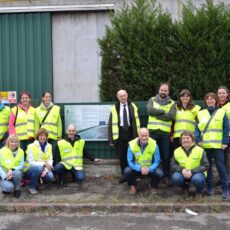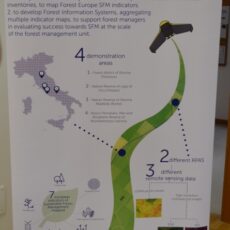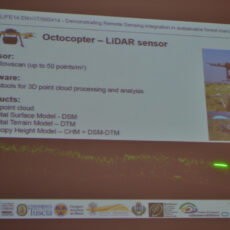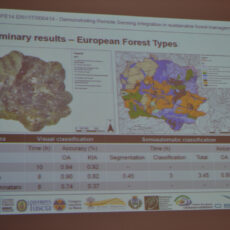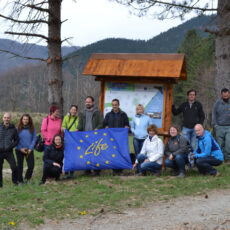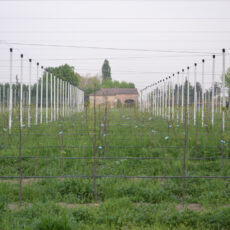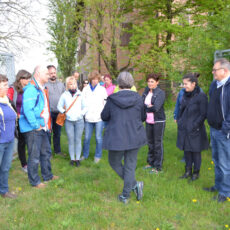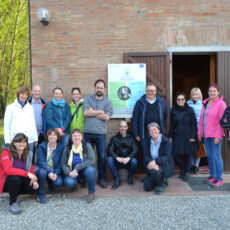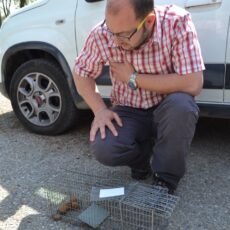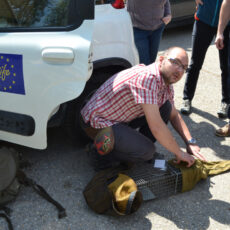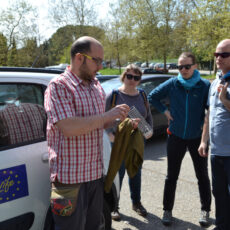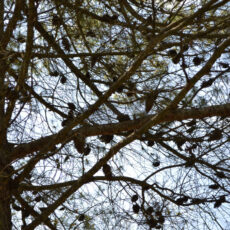The first week in April was reserved for a study visit to our western neighbours, Italian National Contact Point. In order to get most out of the visit for potential Slovenian applicants and partners, part of the visit were also meetings with beneficiaries of seven Italian LIFE projects, who shared their experience with us.
Between 4th and 7th April 2017, LIFE team carried out the third study visit planned in the project LIFE Capacity Building Slovenia. We visited Italy – the member state, which, in the 25 years of LIFE programme, has the second largest share of obtained LIFE grants, just after Spain. In 2016, 19 % of all applications, received by EASME, came from Italy and with only 13 % success rate Italian projects obtained much more funds than Slovenia. Although Slovenia was above-average on the LIFE 2016 Call, we can still learn a lot from Italy and transfer this knowledge into Slovenian environment. Therefore the aim of the study visit was to exchange experience on the implementation of LIFE programme, the successful solutions for the environmental problems with different approaches and the successful integration of private sector into using the programme. So the visit included meetings with beneficiaries of seven Italian projects, who presented us not only the content and objectives of the projects but also their experience with LIFE programme.
In the area of the environment, we have visited three projects on the topic of efficient use of wood and sustainable forest management. Two projects are coordinated by private companies engaged in the development of machinery for wood processing and more efficient replacement of untreated wood with waste wood in the manufacture of various wood products. The third is implemented by a consortium of 10 partners and is involved in the development and presentation of sustainable forest management.
- LIFE Plastic Killer (LIFE12 ENV/IT/000374): The applicant is PAL from Treviso, who, in cooperation with the University of Padua and the association of Italian manufacturers of machinery and tools for the wood processing industry CEPRA, developed a prototype device that allows mechanical cleaning of plastics, metals and other impurities from waste wood, and enables the extraction of a cleaner timber from waste wood, suitable for reuse.
- LIFE GREENJOIST (LIFE13 ENV/IT/000996): The project is implemented by an international consortium of 5 partners co-ordinated by IMAL from Modena. The company develops machinery for the production of transport packaging. In the framework of the project, they are developing a machine for the manufacture of a joist (support) from recycled wood for use in warehouses that will have the same characteristics as unprocessed wood products. During the project this proved to be a more demanding task as predicted, as the challenges of using recycled wood have brought many variables due to the properties of recycled wood, as well as the presence of impurities. At the end of the visit, the representative of the company expressed an interest in cooperating with the Slovenian company in their next LIFE project, which is being prepared.
- FRESh LIFE (LIFE14/ENV/IT/000414): A consortium of partners, coordinated by the Italian Academy of Forest Sciences, consists of 10 organizations, from universities to local communities. They presented us the activities they carry out in the pilot area nearby Ricina. The project is testing the use of drones for remote sensing of the state of forests and developing a method for sustainable forest management.
As an example of the Climate Action Project, we visited the project LIFE+ Climate changE-R (LIFE12 ENV/IT/000404), which was in the Emiglia-Romagna region involved in adapting to climate change by reducing greenhouse gas emissions (GHG) in agriculture. The project consortium of 11 partners was coordinated by the regional authority and involved key stakeholders from farmers, food processors, researchers, regional authorities to traders and producers (e.g. Barilla). The project has tested new measures in agriculture to maintain productivity, reduce production costs and reduce the release of GHG. In order to promote and disseminate environmentally friendly methods, the most effective measures have been included in the Rural Development Programme (e.g. fertilizing fruit trees through the irrigation system), thereby encouraging farmers to use them.
The aim of all three projects from the priority area Nature and biodiversity, visited, is to improve the conservation status of species and habitats and to effectively remove alien invasive species.
- The project LIFE SILIFFE (LIFE14 NAT/IT/000809), which is located in the Sila River basin, is implemented by the Regional Nature Park of the Sile River in partnership with the Veneto region, the Treviso region and the Bioprogramm s.c. The purpose of the project is to identify critical areas where the state of the river is the worst and reduce negative pressures on the river ecosystem. During their visit, they presented their measures to improve the state of riparian habitats and to combat the alien species of crustaceans, turtles and catfish in the Regional Park of the Sila River.
- LIFE EREMITA (LIFE14 NAT/IT/000209): In the project, the Emilia-Romagna region has united six protected areas from its area. Together they carry out activities to conserve populations of two beetle species, hermit beetle (Osmoderma eremita) and the Rosalia longicorn (Rosalia alpina). Due to their life-cycle, both species depend on the presence of old trees, and decomposing and dead wood masses, which are often removed from the forest due to improper forest management. Therefore, the project educates forest owners on the importance of sustainable forest management to preserve the populations of these species.
- LIFE U-SAVEREDS (LIFE13 BIO/IT/000204): The project is implemented by a national institute for environmental protection and research in partnership with local and regional communities from the project area, veterinary hygiene service, nature conservation NGO and regional agency of protected areas. The project is implementing measures to remove the alien species of grey squirrel (Sciurus carolinensis) in the Perugia area, thereby preventing its spreading. Grey squirrel is a native species for North America, which was first introduced in Italy in 1950. In the Umbria region (Perugia) it was first observed in 2000. It has similar requirements for habitat and nutrition as the native red squirrel (Sciurus vulgaris), which is smaller and thus less successful in competing for the same resources. The red squirrel population in the area is consequently in decline, which they want to prevent with the LIFE U-SAVEREDS project.
Our team was accompanied by a representative of the Italian competent authority, the Ministry of the Environment, enabling us to overcome any language barriers and understand some of the management specifics. On the last day we also met with the Italian national contact point and discussed the integration, cooperation and successful establishment of project partnerhips of both countries.
- First we visited the project Life Plastic Killer.
- This is already the second LIFE project for PAL.
- Life Plastic Killer – visiting the production line
- Life Plastic Killer – in the factory they are manufacturing machinery for wood proccesing.
- Life Plastic Killer -presentation of the project
- Life Plastic Killer – an example of MDF panels
- Life Plastic Killer – the scheme of pilot device for removing the impurities from wooden biomass
- Life Plastic Killer – the group picture in front of the prototype
- LIFE SILIFFE – presentation of the project
- LIFE SILIFFE
- LIFE SILIFFE – the Sile River
- LIFE SILIFFE – temporary shelter for alien species of turtles, removed from nature
- LIFE SILIFFE
- LIFE GREENJOIST
- LIFE GREENJOIST
- LIFE GREENJOIST – visiting the production line
- LIFE GREENJOIST
- LIFE GREENJOIST – example material for palettes from recycled material
- LIFE GREENJOIST – checking the prototype
- LIFE GREENJOIST – the prototype
- LIFE GREENJOIST – prototype’s test products
- LIFE GREENJOIST
- FRESh LIFE
- FRESh LIFE
- FRESh LIFE
- FRESh LIFE – presentation of the results of the remote sensing
- FRESh LIFE – a habitat inventarization was made within the project
- FRESh LIFE
- LIFE+ Climate changE-R and LIFE EREMITA
- LIFE+ Climate changE-R – pear plantation
- LIFE+ Climate changE-R
- LIFE+ Climate changE-R
- LIFE U-SAVEREDS
- LIFE U-SAVEREDS – demonstration of the catching method for grey squirrels
- LIFE U-SAVEREDS – demonstration of the catching method for grey squirrels
- LIFE U-SAVEREDS – demonstration of the catching method for grey squirrels
- LIFE U-SAVEREDS – demonstration of the catching method for grey squirrels
- LIFE U-SAVEREDS – alien grey squirrel






